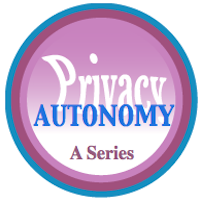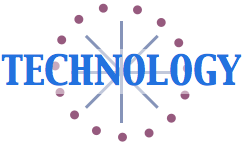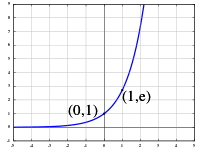 Technologies Enabling the Police State describes the inevitability of pervasive surveillance, how it’s developing, and how we can act now to maintain the maximum degree of freedom. This is Part1 of a series on autonomy in the digital age. Personal and Collective Actions to Maintain Autonomy (Part2) is a how-to post, while Police State Scenarios (Part3) discusses ways that collective permanent loss of autonomy could unfold.
Technologies Enabling the Police State describes the inevitability of pervasive surveillance, how it’s developing, and how we can act now to maintain the maximum degree of freedom. This is Part1 of a series on autonomy in the digital age. Personal and Collective Actions to Maintain Autonomy (Part2) is a how-to post, while Police State Scenarios (Part3) discusses ways that collective permanent loss of autonomy could unfold.
Despite their grim titles, these posts are not intended as doomsday writings, and I don’t intend to say that I think a police state is being developed intentionally. My conclusion is rather that the technologies of mass control are developing rapidly, and the risk is significant that some group will seize control of them in the foreseeable future. I think you’ll find some of their points surprising, perhaps even breakthrough. Please let me know in comments!
I did not want to write this post, and I doubt that you want to read it; however, as I explain here, we’re at a pivotal point of human history. We are rapidly losing our individual and collective autonomy because digital technologies constantly produce data about our behavior, and if we do not act, our loss of autonomy (a.k.a freedom) could easily be irrevocable. In this post I’ll summarize the technologies that are enabling the totalitarian police state and how they’re developing right now.
Trend: Human Nature
![Technologies Enabling the Police State [ Privacy & Autonomy in the Digital Age: human nature ]](http://rollyson.net/wp-content/uploads/2017/03/priv_auto-trend.png) Humans, like primates and other animals, prefer to have “control” over their lives; however, a few outliers have always wanted control over other people. As a student of evolutionary psychology, I note that other primates share this trait.
Humans, like primates and other animals, prefer to have “control” over their lives; however, a few outliers have always wanted control over other people. As a student of evolutionary psychology, I note that other primates share this trait.
In human history, outliers’ thirst for power has been tempered by the necessity of obtaining and maintaining the cooperation of other people to seize and maintain control. Most of these “collaborators” have their own ambitions, and some become rivals. This constant evolution of power dynamics within the controlling group weakens its control over people over time, and history shows that these power alliances eventually crumble. Machiavelli’s The Prince offers a good summary of some of these dynamics.
I often write that my research regularly shows that most humans in groups are well meaning and trustworthy, and it’s true here, too; however, a motivated group of outliers could get control of the technology and tools of mass control, and I think this is a real threat.
Since the emerging systems are control are pervasive, centralized and mechanical, the fundamental character of the threat is different than ever before in history: machines can do a larger portion of the work of maintaining control, so control is easier and less costly, and the old human dynamic of maintaining alliances is far less important.
Human nature is a constant; it doesn’t change over time.
Technology: How Digital Is Mechanizing Control
Numerous technologies are converging that will transform the human dynamic within outliers’ desire for power, and it threatens individual and group autonomy. Please consider this list illustrative; there are many other technologies, but my main purpose is to help you start thinking about it. Drill down by following the links within each description, and please share your favorites in comments. It’s also useful to think in terms of types of technology like: sensors, artificial intelligence, on-demand infrastructure, on-demand wireless services, and robots.
 Cameras/capture devices—the least surprising but vital technology, our mobile devices illustrate cameras’ improvements in sensors over the last ten years. Cars and robots also depend on them to “see.” From a computer’s perspective, data is data, so capture devices can be modeled on any of human senses and many more: sound, touch, smell, taste, radiation, vibrations… These devices depend on cheap, powerful local chips and cloud computing to process the data. For example, here’s how vendors of police departments are developing the body camera technology. Note that the first use case for bodycam technology was improving confidence in policing, but departments now see the value in real-time surveillance.
Cameras/capture devices—the least surprising but vital technology, our mobile devices illustrate cameras’ improvements in sensors over the last ten years. Cars and robots also depend on them to “see.” From a computer’s perspective, data is data, so capture devices can be modeled on any of human senses and many more: sound, touch, smell, taste, radiation, vibrations… These devices depend on cheap, powerful local chips and cloud computing to process the data. For example, here’s how vendors of police departments are developing the body camera technology. Note that the first use case for bodycam technology was improving confidence in policing, but departments now see the value in real-time surveillance.- Artificial intelligence/machine learning—these technologies have been long hyped, but computing power has finally made them actionable for more use cases, and they are becoming widely used by large companies (for examples, see IBM Watson). Broadly, the technologies mechanize the computer’s iterative “learning” by detecting patterns in any kind of data—and responding based on their adaptive learning. AI and ML engineers no longer speak of “programming” the computer; they “train” it by exposing it to carefully curated data sets. Wikipedia’s excellent entry on AI includes many other links. Big data is a huge enabler of artificial intelligence/machine learning (“AI”) because computers can ingest large data sets of behavior and “learn” behavior patterns very quickly. For example, mobile phone data from the evening commute in Chicago enables AI to glean insights that humans can’t. Digital data is cheap and helps machines “learn.” Every digital device you use contributes information about you that can be analyzed at any point in the future.
- Face/motion recognition—Face and motion recognition is only one example of the combination of capture devices and AI. The computer takes in data whose patterns identify individuals by how they look. These tools in combination have changed the surveillance game because watching people has become incredibly cheap and increasingly effective. Surveillance by humans in security roles is costly and less effective because humans get bored and their brains naturally stop noticing the patterns of behavior for which they are looking. Machines never tire, and they don’t question responses as humans do. Here’s a short list of posts on how face recognition technology is developing. Keep in mind that visual sensors can be replicated for sound, smell, etc. The latter just require different sensors and algorithms. Each human has a unique smell and sound, too.
- Cloud computing—Cloud computing is a tremendous enabler for smart devices because the computing power can be performed remotely from the capture device, so the latter can be small (exhibit 1, your smartphone), and cloud is terrifically scalable, flexible and inexpensive. Computing can be done “locally” on the device/machine or in the cloud. It’s often a combination of the two.
- On-demand/streaming services—People are adopting online streaming services in vast numbers, and this makes people easier to control because they are forgetting how to function without streaming services. If their access is denied, their ability to do things is limited. Notably, this increasingly includes money and payment systems. People are rapidly becoming dependent on digital concierges.
- Mass media/entertainment—Humans have always used communication to influence their fellows’ and enemies’ thoughts. If you want to control a human, control his/her mind. All coups d’état involve commandeering communication systems because they are an efficient way to influence the mass’s response to physical/armed initiatives. Propaganda is a human invention. We regularly endure pervasive efforts to influence our thoughts by any mass medium: films, TV, newspapers, gatherings, social media, advertising. What is changing the game here is that science is revealing how the human brain works in more detail through cognitive science and behavioral economics, so psychology is also being mechanized. This is a game-changer.
- Smart devices/Internet of things—Mobile devices are centralizing digital controls over a rapidly increasing portion of human-made things people use to live and work. Anything with “smart” in its name has been computerized, which is important for two reasons: its sensors provide data on its users, and users’ ability to use the device can be easily revoked, which makes people easier to control. To appreciate this, read about how mobile phone spoofing works (IMSI catchers), and realize that any IoT device can be similarly spoofed, including your Alexa, car, smart home system, smart clothing, pacemaker…
- Connected mobile devices/robots/drones—if we think of the capture devices and AI as a mechanical brain, robots enable the machine to act within the physical world based on the commands of its mechanical brain. Moreover, the networked computing infrastructure for mass mobile devices such as connected/autonomous cars could be repurposed for robotic law enforcement. Robots can be built for many functions, including surveillance and law enforcement.
I hope you can see that the convergence of these technologies could enable multifactor control of people. Without firing a shot, people could be largely controlled by revoking access to their mobile devices/communications, vehicles, houses, and (soon) the ability to pay for anything. Robotics is undergoing rapid development, and advances will make possible various degrees of robotic law enforcement. By the way, robots need not have humanlike forms. Some military robots are modeled on insects; they’re tiny.
Technology: Adoption and Use
 Information technology adoption patterns—The patterns of the diffusion of hightech technologies are well known. Notable here is the fact that adoption follows an exponential pattern; that is, its first stage of development (like incubation) is long and without apparent effect, but then it rises rapidly. Exponential patterns often surprise people because they assume nothing is happening, so they stop noticing the technology and its potential impact on their lives seems to explode overnight.
Information technology adoption patterns—The patterns of the diffusion of hightech technologies are well known. Notable here is the fact that adoption follows an exponential pattern; that is, its first stage of development (like incubation) is long and without apparent effect, but then it rises rapidly. Exponential patterns often surprise people because they assume nothing is happening, so they stop noticing the technology and its potential impact on their lives seems to explode overnight.- The repurposing of technology and tools—Technology and tools don’t “care” how they are used, and they are often designed with one purpose in mind (i.e. the police bodycam example above), and this purpose sets the usage context around them for most people. Then someone discovers that the tech can be used for a different purpose and shocks most people. Examples are many. Gunpowder was invented for fireworks, but it was subsequently used to transform warfare: cannon made short work of castle walls while guns made knights’ armor irrelevant. Physicians use prescription drugs in “off-prescription” ways. The key point here is that few people imagine other uses whose context may be very different from the current one.
Trend: Political Systems
![Technologies Enabling the Police State [ Privacy & Autonomy in the Digital Age: political systems ]](http://rollyson.net/wp-content/uploads/2017/03/priv_auto-trend.png) The repurposing of political systems—The oft-cited example of the Weimar Republic in Germany shows that a group can obtain power through “normal” means and change the rules to increase its own power at the expense of the populace. Other examples, past and present, in Wikipedia’s Deep State article.
The repurposing of political systems—The oft-cited example of the Weimar Republic in Germany shows that a group can obtain power through “normal” means and change the rules to increase its own power at the expense of the populace. Other examples, past and present, in Wikipedia’s Deep State article.- The lack of technology governance—The technologies listed above are rapidly are developing individually, as capitalistic enterprises. As with hightech generally, the legal system is far behind. The systems are being deployed piecemeal, without checks and balances, like those in the U.S. Constitution, for example. The issue is, these private technologies have massive cultural and political ramifications when used together, but this fact is unaddressed by society.
- The lack of government governance—Citizens, including legislators, don’t know what’s really going on within federal agencies: Edward Snowden revealed that agencies are doing things far beyond what citizens know, under the guise of “security.” We can therefore assume that the technologies of surveillance and control are significantly more advanced than reported.
- No conspiracy—I don’t subscribe to any conspiracy theories, nor do I mean to suggest that current government agencies have a secret plan to create a totalitarian regime (although some could have). However, this doesn’t matter because, once the infrastructure is in place, the risk exists that a group in the future could use it to gain absolute control. Tomorrow is the future. The intent doesn’t matter. The more the technologies are deployed, the higher the risk. Tools are tools.
Trend: Exaggerated Perception of Terror
Currently the political permission for deploying mechanical systems of power is largely driven by the exaggerated threat of “terrorism.” Populations of democracies around the world are agreeing to increased surveillance and response systems, although in most countries, deaths and injuries due to terrorism are microscopic compared to murders, accidents and other “normal” causes of injury and death. I am not saying that there is no threat of terrorism; there clearly is. I’m saying that the amount of attention and funding to terrorism is vastly higher than the amount of deaths and injuries caused by terrorism.
I observe an inverse relationship between trust and power: when people are in an environment in which they trust other people, their perception of being safe increases. Importantly, the converse is also true: when people are in an untrusted environment they feel unsafe, and this leads to their increased support of “security,” including surveillance and enforcement.
Trend: Cyber Crime
![Technologies Enabling the Police State [ Privacy & Autonomy in the Digital Age: cyber crime ]](http://rollyson.net/wp-content/uploads/2017/03/priv_auto-trend.png) Digital devices of all kinds are subject to surprising and unauthorized uses. My main concern is that an authoritarian regime will seize control of civilian digital devices and usurp citizens’ autonomy. That said, a far more likely source of surprise will arise through “cyber war” in which a [foreign] group or government will disrupt/turn off utilities, cars, medical devices, Internet networks. We are virtually guaranteed to experience some version of cyber crime interruptions, but these are ultimately less threatening than an authoritarian regime.
Digital devices of all kinds are subject to surprising and unauthorized uses. My main concern is that an authoritarian regime will seize control of civilian digital devices and usurp citizens’ autonomy. That said, a far more likely source of surprise will arise through “cyber war” in which a [foreign] group or government will disrupt/turn off utilities, cars, medical devices, Internet networks. We are virtually guaranteed to experience some version of cyber crime interruptions, but these are ultimately less threatening than an authoritarian regime.
Cyber crime disruptions will take many by surprise because “hacktivist” attacks are common and grab the headlines while “serious” attacks are rare as of writing, so this breeds complacency. However, the cyber criminal communities develop their skills very quickly. Although various cyber labels exist, they have similar impacts on civilians.
The likely targets of cyber criminals vary widely depending on the group and its goals. Here’s an illustrative list to start you thinking. Happily, the remedies I suggest for preventing the police state also work here.
- Utilities—electric power, water, telecoms
- Financial—banks, credit card companies
- Health—hospitals, patient monitoring applications, physician offices
- Control systems—elevators, cars, aircraft, smart home systems
Conclusion: Technologies That Enable the Police State
Technologies enabling the police state shows that the convergence of technology, political and human trends significantly change human power dynamics because systems for mass monitoring and control are digitizing and automating.
I have been on the front lines of digitizing business and lifestyle since the 1990s. I’ve repeatedly analyzed technology and user behavior in personal and global business contexts. I have professional contacts in all the technology sectors mentioned above, so I’ve learned behind-the-scenes details about technologies development and adoption.
One of digital technologies’ chief characteristics is rapid development cycles and software-enabled abstraction, so they are quite easy to retool. Therefore, using these technologies in surprising ways is increasingly easy. Human nature dictates that groups of outliers are planning on taking advantage of technologies and data. History reveals that there is no tool that outliers won’t use to grow their power, so digital technologies are no different. In the next post, I’ll lay out actionable ways we can minimize the loss of our personal and collective autonomy.

Leave a Reply
You must be logged in to post a comment.